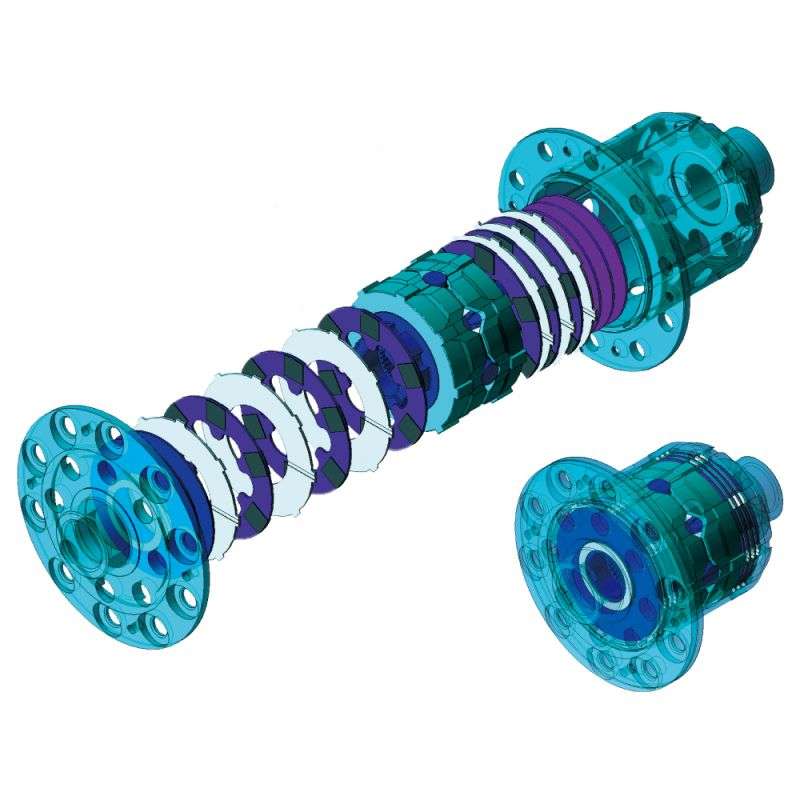No products
Prices are tax included
Product successfully added to your shopping cart
There are 0 items in your cart. There is 1 item in your cart.
M&M Honda CIVIC FK7 Hybrid Carbon LSD 6MT
Specifications/Notes: Carbon LSD 1.5WAY Initial torque 30-40kg-m ATS carbon LSD has a CC composite chip baked at 2000℃ to 3000℃ bonded to a steel plate. The adhesive is a heat-irreversible epoxy adhesive, but the adhesive strength decreases at around 350℃.
As a guideline, when the oil temperature reaches 140℃, it is necessary to run a cooling run to cool it down. It is necessary to attach a thermometer and repeat full-throttle driving and cooling driving within a range where the LSD oil does not exceed 140℃, or it is necessary to install an oil cooler.
Because of the CIVIC FK7's turbo car, the amazing frictional force of carbon provides an accelerator response and strong enough to withstand professional use in competitions and races, despite the differential locking force being less than one-tenth that of a metal LSD. This is a dream-like revolutionary carbon LSD that exhibits locking performance and automatically performs the necessary minimum differential restriction that does not interfere with handling (no understeer). Both the twin clutch and LSD are special parts for ATS & M&M HONDA.
■Differential locking force less than 1/10 of metal LSD
The differential locking force of the carbon LSD, which does not interfere with steering operation even when high initial torque is applied, is extremely strong as you can feel, but it is less than one-tenth that of a metal LSD. The differential locking force of a metal LSD is much greater than the tire grip force, and its maximum value is greater than the strength of the drive shaft and LSD built-in gear. Metal LSDs require extremely small cam angles and initial torque to slow down the accelerator response in order to avoid the negative effects of differential locks, but carbon LSDs do not require this at all, making the LSD more agile in response to driver operations. By reacting to this, you can bring out the maximum potential of your driver.
■Differential locking force comparable to tire grip force
Carbon LSD's differential locking force is smaller than tire grip on dry roads, and is comparable to tire grip on wet roads. Therefore, on dry roads, it does not interfere with steering operation even when accelerating, and on wet roads, by maintaining the appropriate accelerator opening, the differential limit can be safely controlled without losing grip.
■Differential locking force that persistently resists drive loss
Metal LSDs have a very large differential locking force, but on the other hand, they can suddenly and abruptly generate large slips due to changes in the road surface or accelerator operation. This is due to the extremely large difference between the maximum static friction and dynamic friction of the metal plate in oil. Since the difference between maximum static friction and dynamic friction is small, carbon LSD has the property of persistently and persistently resisting slippage.
■An ideal LSD that does not interfere with steering operation and suppresses drive loss>br> The differential locking force near the tire grip force and the sticky friction characteristics eliminate most of the unstable factors caused by differential differentials, so it is ideal for racing. Not only does it increase speed in competitions, but it also improves driving stability on highways and in the rain. Furthermore, even with high initial torque and sharp accelerator response, there is no noise, making you forget the existence of LSD on the street.
■Influence of initial torque
It can be seen that the initial torque is very small compared to the size of the driving torque. Initial torque does not strengthen the differential lock force when the accelerator is fully open, but rather it has a large effect on the agility of the differential lock in response to accelerator operation and the speed and sensitivity in communicating tire grip conditions to the driver. In order to bring out the capabilities of the car and driver, the initial torque should be as large as possible without causing any negative effects.
 Submit a review and get voucher for discount £1, valid for 365 days
Submit a review and get voucher for discount £1, valid for 365 days| Rating: |      |
| Name: | |
| Text: | |
| Add review |




